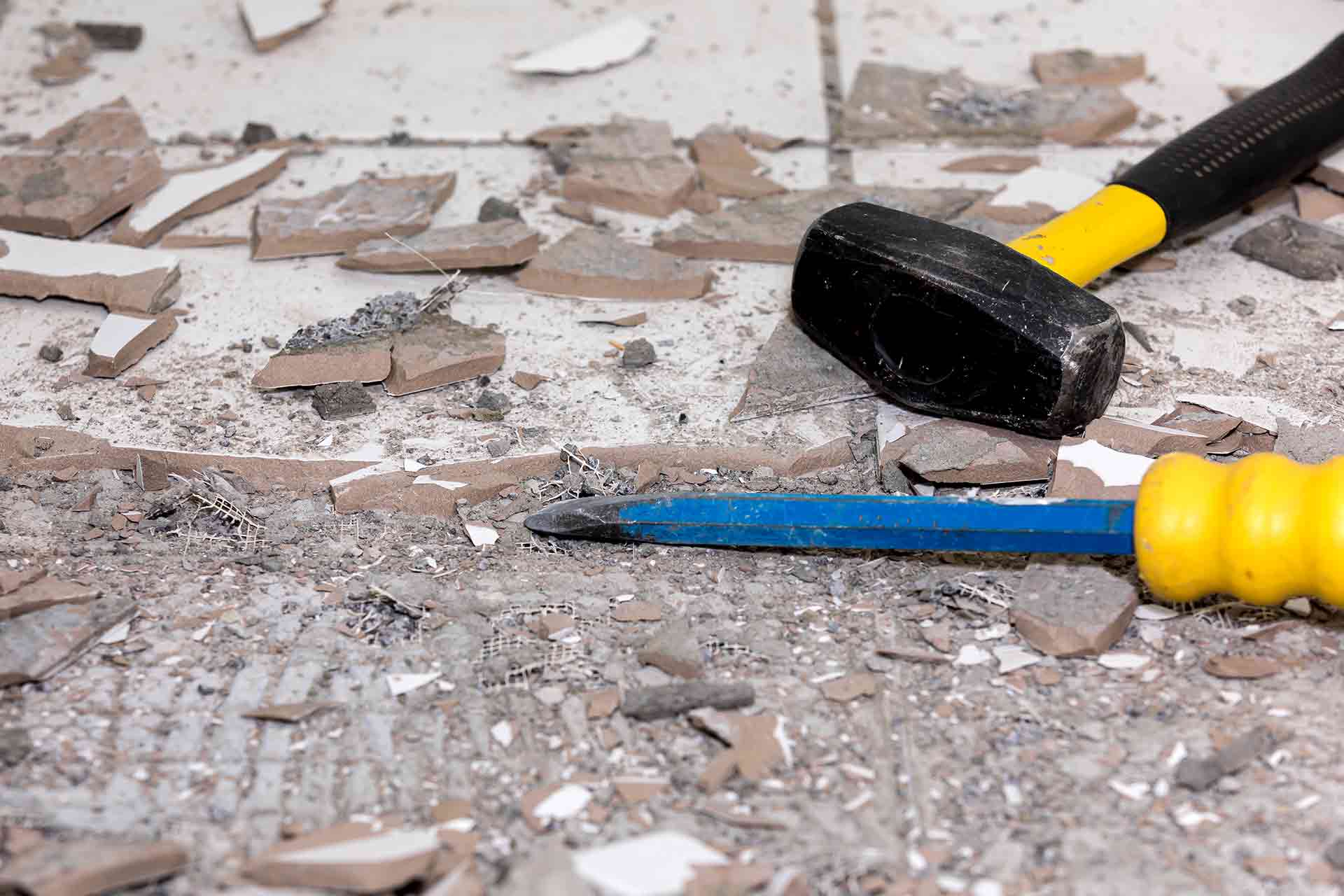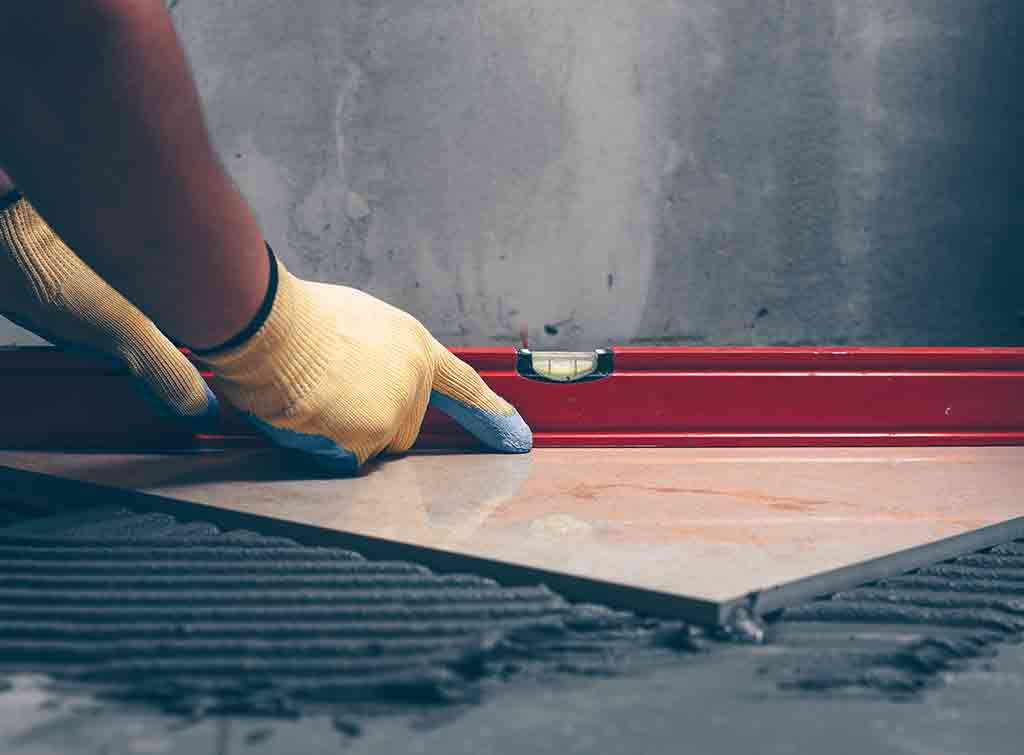Blog>Expert Advice>The best way to clean floor tiles
Last updated: 18 August 2023
The best way to clean floor tiles
From porcelain to vinyl and terracotta, we show you the best way to clean floor tiles. Read our expert tips for squeaky-clean floor tiles and sparkling grout.
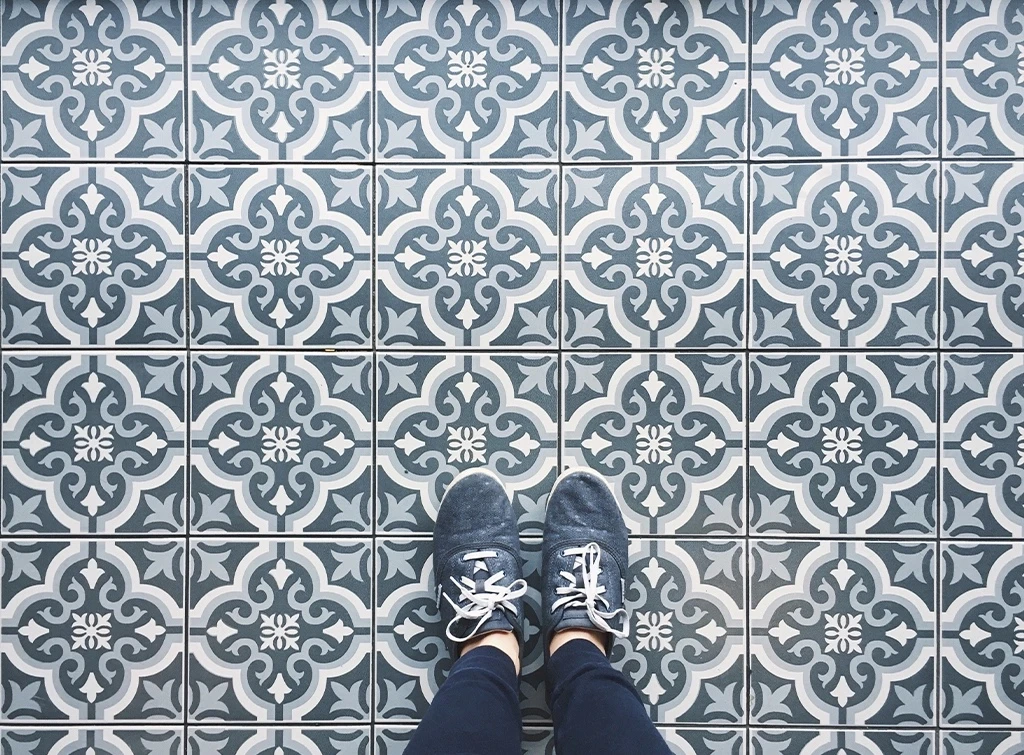
Floor tiles are a durable flooring choice for all over the home – but what's the best way to clean tiles and keep them looking like new?
Let's face it there's nothing worse than a grubby, grimy floor tile to ruin the look of your kitchen, bathroom and hallway. In fact, anywhere that has a tiled floor in your house.
Your choice of floor tile material will determine the best way to clean it. Porcelain, marble, vinyl or stone are all very different. While ceramic and porcelain tiles are hardwearing and relatively low maintenance, other tile materials will need more care and specific cleaning products.
For best results, we always recommend hiring a professional. Find out the average floor tile cleaning cost.
See the tradespeople we've checked and recommend for your job
How to clean ceramic and porcelain tiles
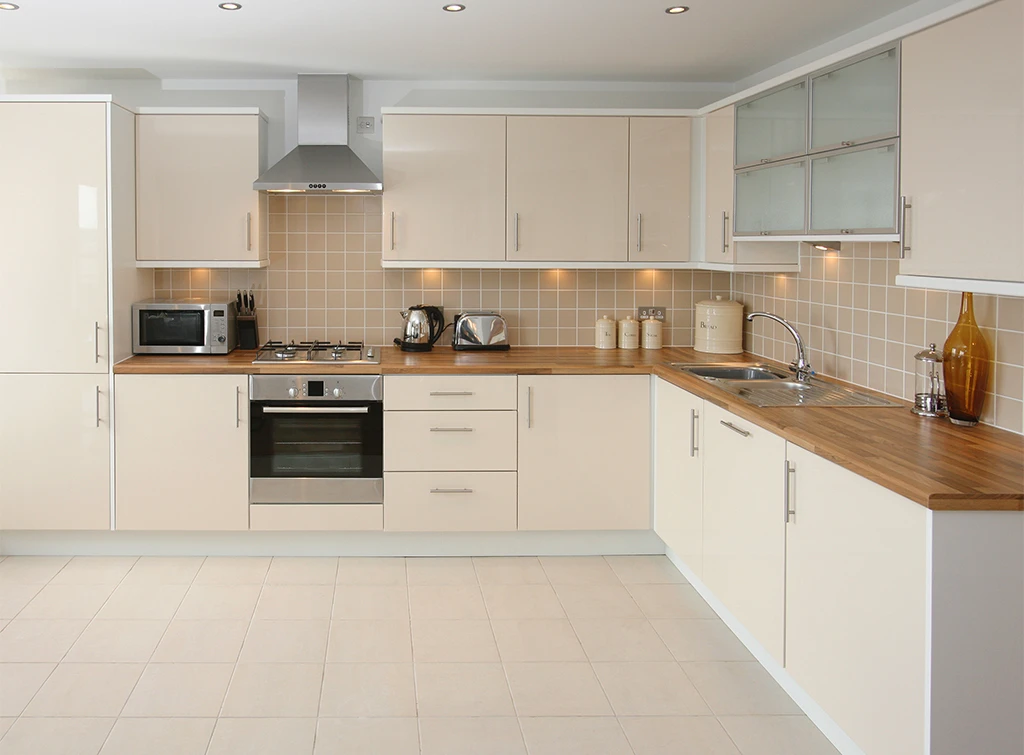
Ceramic and porcelain floor tiles are durable and moisture-resistant. So, it's quite simple to get a sparkling, streak free surface with the right tools and method.
Tools for the job:
Soft-bristle broom or vacuum brush attachment
Microfibre mop or steam mop
Water bucket
Mild detergent
Clean, lint-free cloth
Clean up loose dirt and debris before washing. Using a soft-bristle broom or hard floor vacuum attachment, get rid of any dirt, dust, sand or grit
Add a mild detergent to a bucket of hot water. Be careful not to use too much detergent or an overly concentrated solution or you'll end up with streaky floors and a sticky residue underfoot
Use a microfibre mop. Plunge your mop into the bucket of cleaning solution and squeeze out the excess. Mop the floors in a figure-of-eight pattern. Rinse your mop regularly or you'll be left with dirty streaks and stains
Rinse the floors. For a streak-free finish with no residue, change the water in the bucket and rinse off the tiles. Do this for the entire floor
Dry off with a clean cloth. For a really professional finish, dry your floor with a microfibre cloth so there are no water marks left behind. This is really important for glazed tile floors as you don't want water spots forming. Unglazed tiles can be left to air dry
Take a look at our guide to the differences between porcelain and ceramic tiles.
How to clean vinyl tile floors
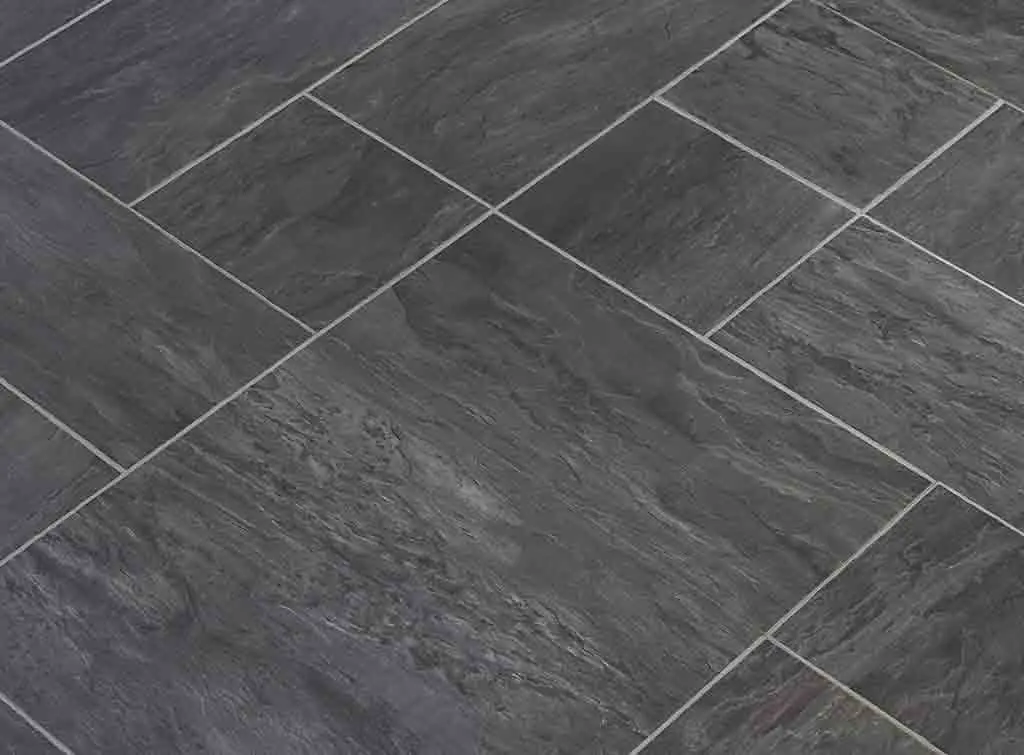
Vinyl floor tiles are durable, versatile and an excellent choice for every room in the house.
Available in a vast selection of colours and patterns, vinyl is made from PVC and is easy to maintain. To clean vinyl tile floors, follow the same steps as for ceramic and porcelain tiles.
You might want to use a special vinyl cleaning solution or something natural like water and vinegar. But double check this is suitable and steer clear of abrasive cleaners which can scratch the surface.
Check out our cost guide of vinyl flooring versus tile flooring to help you choose which flooring to go for.
How to clean linoleum tile floors
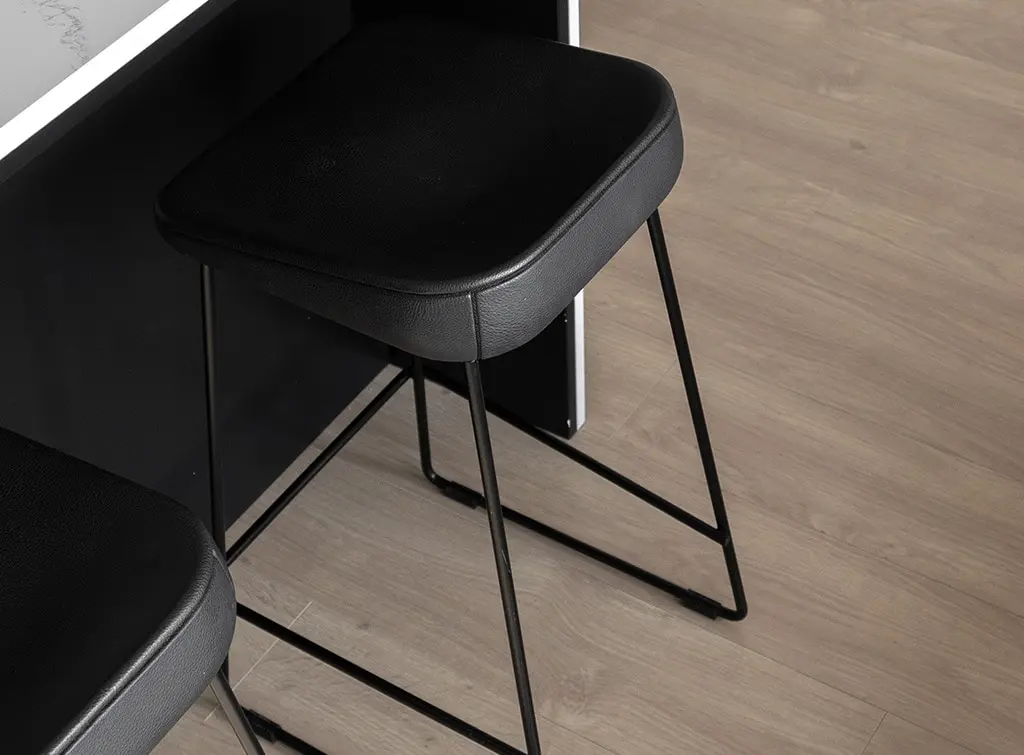
It's easy to get linoleum tiles mixed up with vinyl. While these materials are often bracketed in the same category, linoleum is very different from vinyl.
Linoleum is made from natural ingredients such as linseed oil, pine resin, wood flour or cork dust. This makes it an eco-friendlier choice as it's non-toxic and contains no VOCs. Linoleum is also recyclable and biodegradable.
To keep linoleum tiles clean, remove dust and debris as described above. Clean using a microfibre mop and mild detergent.
Make sure there's no standing water on the surface. Consider applying a coat of wax every few months to protect your linoleum floor.
How to clean natural stone floor tiles
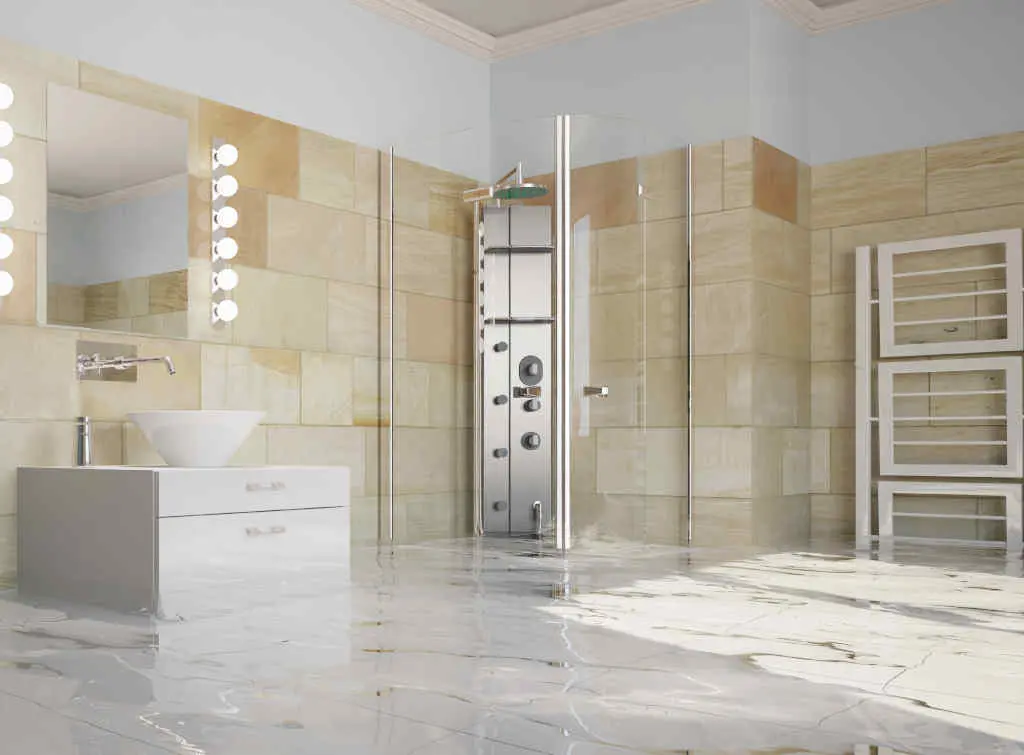
Natural stone floors are a gorgeous addition to your home, but you will need to take more care when cleaning them.
It's key that you choose the correct cleaning product for your natural stone. Harsh substances in traditional cleaning products can damage the surface of natural stone tiles.
Always test clean a small area of stone first, especially stones like marble which are particularly porous (even to water) and scratch easily.
Remember to take care when dry cleaning the surface before mopping. Vacuum cleaner attachments might damage or scratch a stone floor especially if it has an undulating surface, such as riven slate or tumbled limestone.
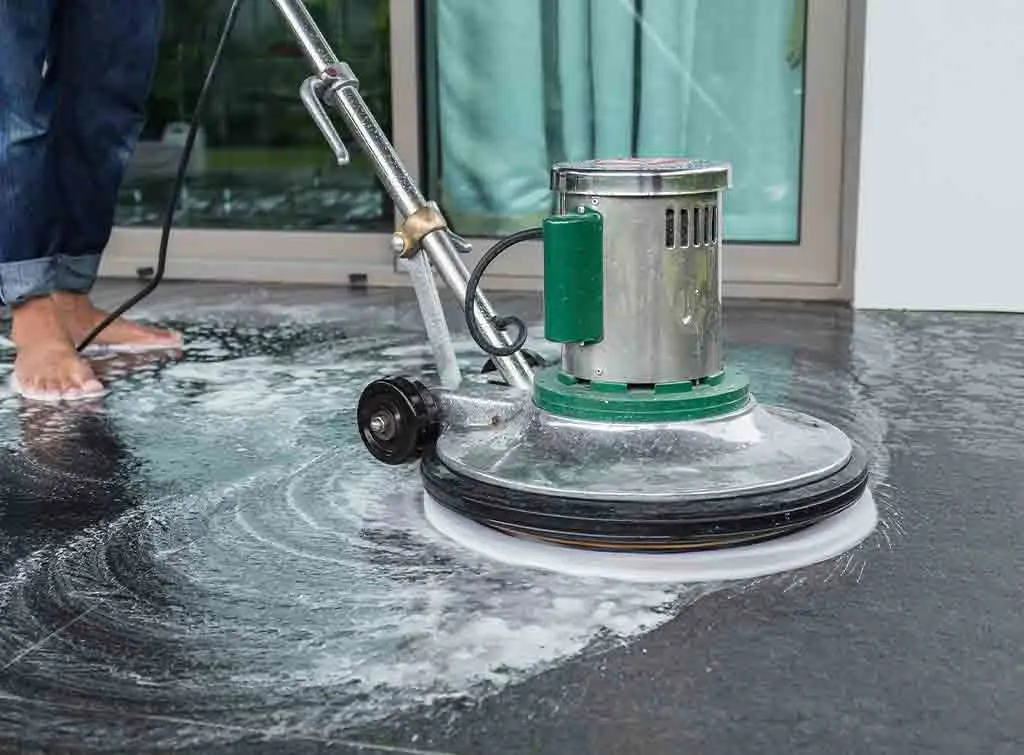
Marble tiles: Wipe up spills quickly to prevent staining. Avoid acidic cleaners containing lemon or vinegar as they will etch away the tile's surface. Also, steer clear of anything that will scratch the marble such as scouring powders or harsh bristles.

Granite tiles: More durable than marble, granite tiled floors still need to be cleaned with a mild pH-neutral detergent. A harsh cleaner can leave streaks or discolouration.
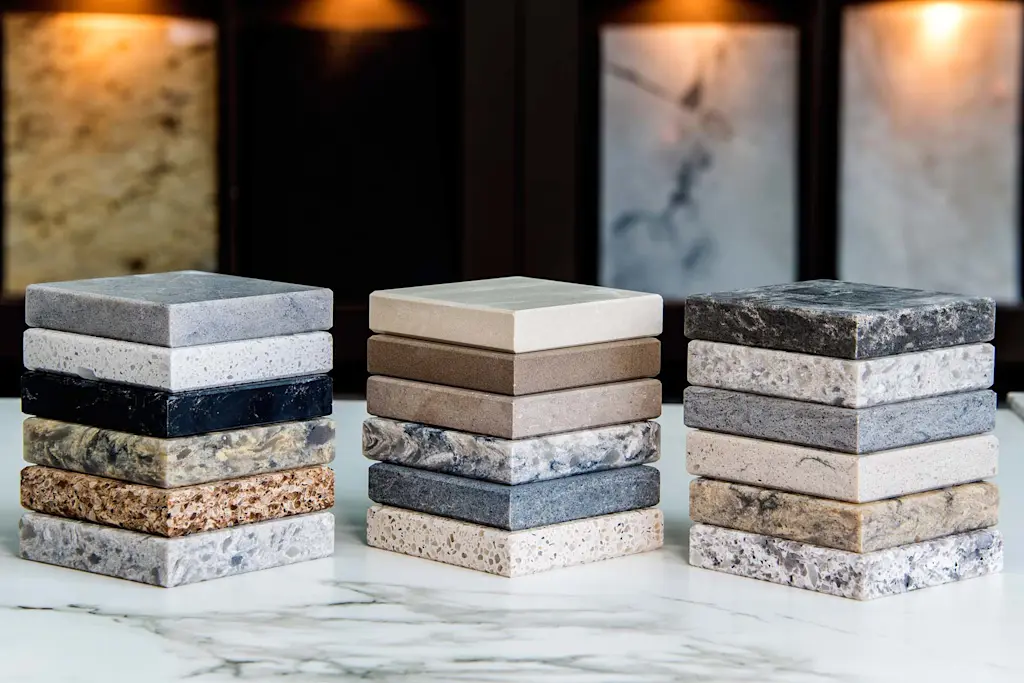
Slate, limestone and travertine tiles: Follow the same as above and use a neutral pH cleaner, avoiding any acidic cleaning ingredients.
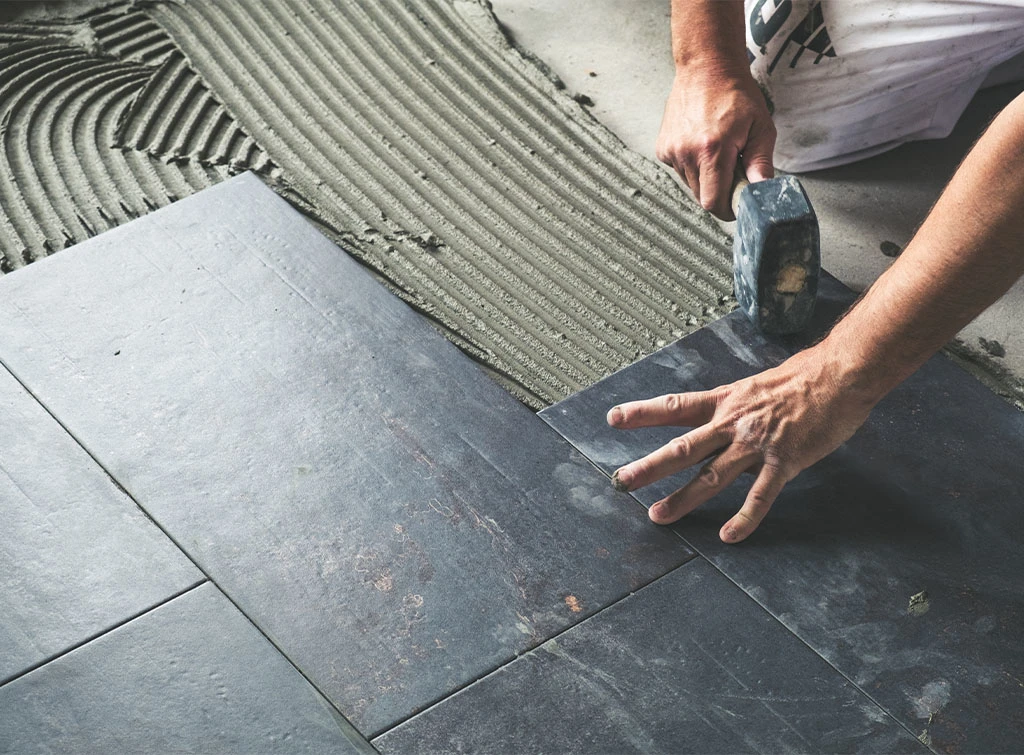
Terracotta tiles: Clean with a non-acidic detergent. Sealing terracotta will also help protect the surface. Antique terracotta tiles should be finished with a wax polish to enhance the natural colour and protect against staining.

Consider sealing your natural stone to prevent stains, scratches and cracks. We recommend hiring an expert for this.
Take a look at our stone restoration cost guide for more details.
Best way to clean floor tile grout
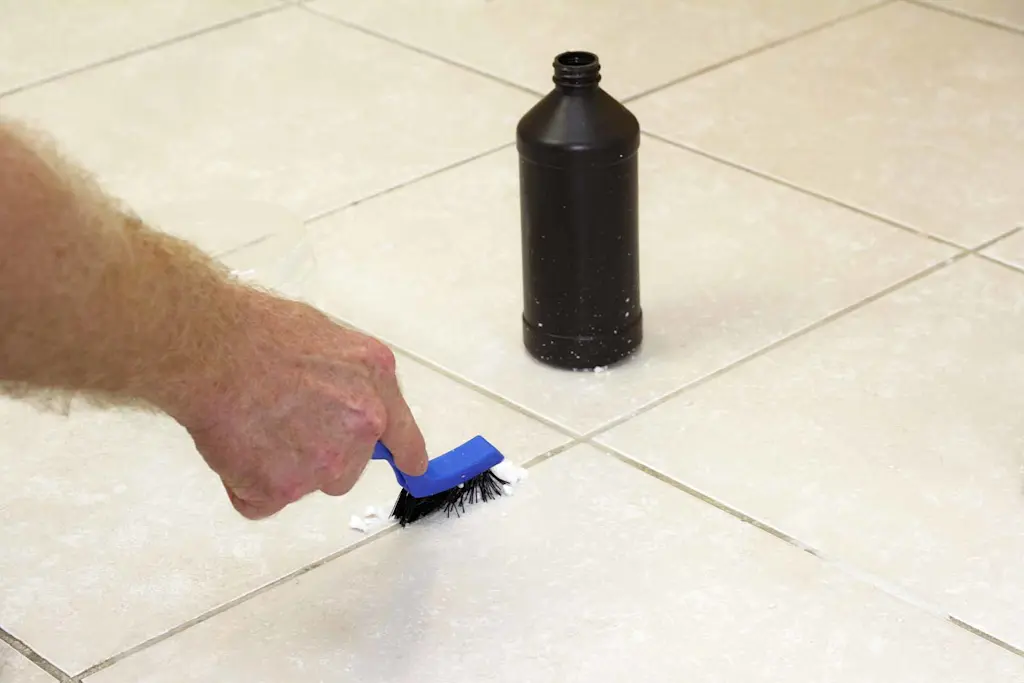
Grout is generally made from cement and is very porous – hence it doesn't take much for floor grout to get discoloured and look grubby.
Freshly cleaned tile grout will make such a difference to the overall look of your tiled floor. Yes, it's likely to be one of those time-consuming jobs you've been putting off for a while, but the end result is definitely worth the extra elbow grease.
Follow our simple steps for the best way to clean floor tile grout:
Make a paste from two parts bicarbonate of soda to one part water
Rub onto the dirty grout using an old toothbrush (an electric toothbrush is a great idea!). If possible, let it sit overnight
Fill a spray bottle with distilled white vinegar and spray liberally over the bicarb paste. It should start bubbling up into a thick mixture
Start scrubbing away using the toothbrush or grout brush. Keep going until you see the grime come off. Rinse everything off with water to reveal your freshly cleaned grout lines
Regular upkeep is the key to clean grout. Sealing and maintaining it on a regular basis won't mean undertaking such a huge grout cleaning job in the long run.
Try a fortnightly grout cleaning to ensure your tiles remain hygienic and look amazing.
If your tile grout is beyond cleaning, take a look at our guide to regrouting tiles.
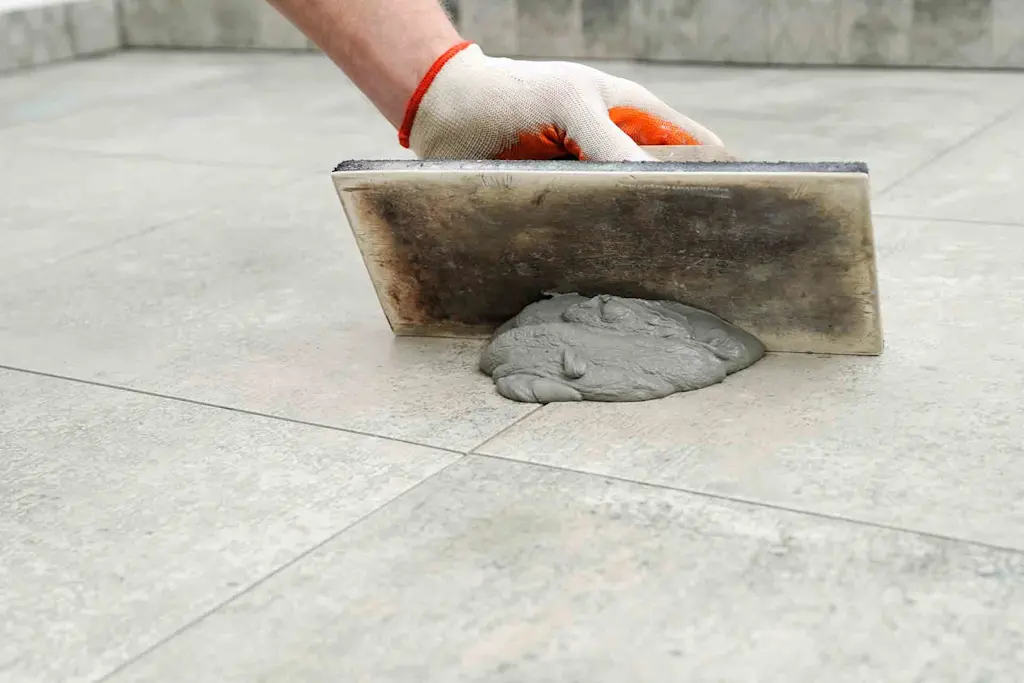
FAQs
How often should you clean tile floors?
High traffic areas of the home like a hallway and kitchen need vacuuming and sweeping a few times a week. Then a thorough mopping once a week.
What should you not clean tiled floors with?
Steam mops are not recommended for some tile materials such as linoleum or natural stones. Also, steer clear of abrasive cleaners or tools that can scratch the surface. Harsh detergents and acidic cleaning products are a no no too.
Why is my floor sticky after mopping?
Don't add too much detergent to your water bucket in the first place. Then make sure you rinse tile floors thoroughly. Get a clean bucket of hot water and work across the floor. You can dry everything off with a soft, microfibre cloth for a professional finish you'll adore.
See the tradespeople we've checked and recommend for your job
More Expert Advice Articles
More Hard Floor Cleaning Articles
See the tradespeople we've checked and recommend for your job



